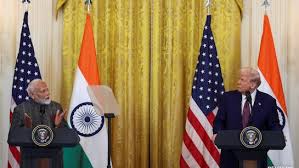
'Zero-for-Zero' tariff model is not good for India...?
The 'Zero-for-Zero' tariff model will not be included in the proposed bilateral trade agreement (BTA) between india and the US. According to government sources, such a strategy is not practical due to the huge difference in the level of economic development of the two countries.
Work is being done on a big package deal
Under the 'Zero-for-Zero' model, both countries completely eliminate tariffs on each other's similar products. But officials say that such agreements are possible between developed countries like the US and the european union, not with a developing country like India. A senior official told PTI that a trade deal is not based on the basis that "if the US removes tariffs on electronics, we will also remove them." He said that india and the US are working towards a comprehensive package deal, which will include issues like goods, services and non-tariff barriers.
The negotiations for this deal started in march 2025 and the target is to complete its first phase by September–October. Currently, there is a trade of about $191 billion between india and the US, which is targeted to be taken to $500 billion by 2030.
india in a better position
At present, sectoral discussions are yet to be held between the two countries. The indian government believes that it is in a better position to prepare for trade agreements than other countries. At the same time, the concept of 'Zero-for-Zero' was introduced by the Delhi-based think tank 'Global Trade Research Initiative' (GTRI), but the indian government now seems to be in favor of a balanced and comprehensive dialogue. America's major demands in this dialogue include industrial products, electric vehicles, wine, petrochemicals, dairy and agricultural products such as apples, nuts and alfalfa. On the other hand, india is demanding concessions in tariffs on labour intensive sectors such as textiles, garments, gems and jewellery, leather, plastic, chemicals, oil seeds, prawns and horticulture





 click and follow Indiaherald WhatsApp channel
click and follow Indiaherald WhatsApp channel